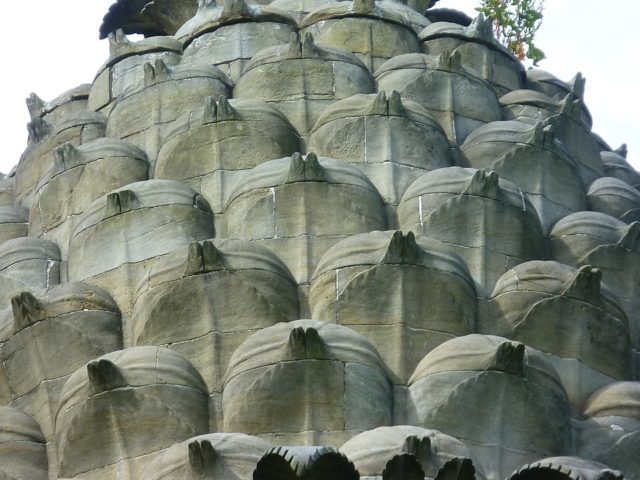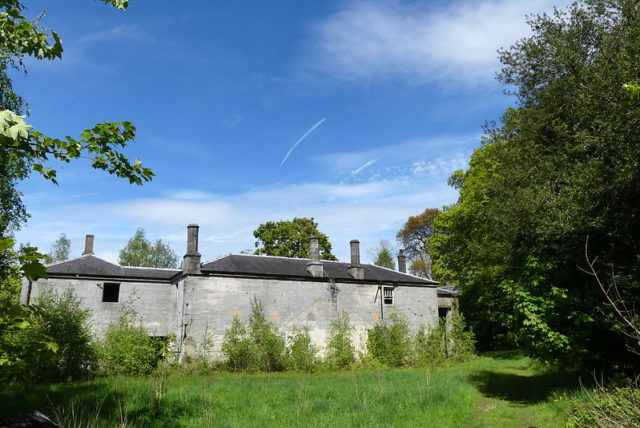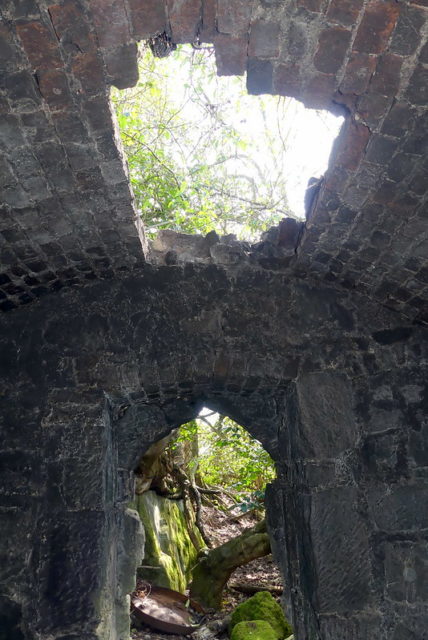The estate of the Earls of Dunmore, better known as Dunmore Park, lies not far from the southern bank of the River Forth northwest of Airth, Scotland. The property once consisted of Dunmore Park House, formal gardens, a stable, and a pineapple-shaped folly that has come to be known as the Dunmore Pineapple.


In 1754, the 4th Earl of Dunmore, John Murray, purchased the estate from the Elphinstone family at a cost of £16,000. The Dunmore Pineapple was built in 1761 as a birthday present for his wife, Charlotte. The building was used as a summer house and offered grand views of the estate’s gardens.
It is likely that the Dunmores lived in Elphinstone Castle (later referred to as Dunmore Tower), a tower house built in the 1500s. However, there are no records to back this up, so it’s only speculation.

In the 1820s, the 5th Earl of Dunmore commissioned the architect William Wilkins to build him a stately home on the grounds. This gave rise to the construction of what would become Dunmore Park House and also a separate stable block. As the estate grew, so did the village of Dunmore which sits on the east side of the river. This was where workers from the estate would live.
A short while later, extensions made to Elphinstone Castle were demolished so that only the main tower remained. A small chapel was built next to the tower, better known as the Episcopal Church of St. Andrew. The ground floor of the tower was used as a mausoleum, and a parsonage was built to the east of the walled gardens.

The Murray family continued to live in Dunmore Park until 1911. Despite their departure, the estate remained private property until 1961 when it was converted into a girls’ school for three years. After that, it was closed, and the buildings were abandoned.
In 1970, the Dunmore estate was divided and put up for sale. The Countess of Perth acquired a parcel of land that included the walled gardens and the Dunmore Pineapple. She donated this building to the National Trust for Scotland in 1974. Records show that Dunmore Park House itself was acquired by a farmer who turned the whole site over to agriculture.


In 1972, it was necessary to demolish part of the main house for safety reasons. A plan to demolish the whole property was approved in 1987 but never implemented.
In 1991, a request was made for a permit to build a residential complex with a hotel and golf course, a project valued at £25 million. The application was approved by the end of the same year, and it seemed that the hotel would open in 1994.


By 2006, the plans had changed, and the proposal was to convert the ruins into residential apartments as well as to construct an additional 45 houses on the site. However, to date, the only work to have been completed is groundwork, although the plans are described as being “live in perpetuity.”


Nowadays, the Dunmore Pineapple and the walled gardens provide an entertaining day out for visitors to Dunmore Park. Having been successfully restored and renovated, the Dunmore Pineapple can also be rented out as unusual holiday accommodation through the Landmark Trust company.
Visitors to Dunmore Park can explore the ruins of a Gothic mansion and investigate the wine cellars, which are still intact. Trees have crept closer to the walls over the years, and some have even sprouted inside as nature works slowly but steadily to reclaim the land.


Despite its sorry state, it is still possible to see the elaborate carvings on the outside of Dunmore Park House, evidence of mullioned windows, and armourial panels. Such details allow visitors to imagine how striking this place must have been when it was owned and cared for.
The chapel was demolished in the 1980s, but the parsonage remains a private home that can be rented out for weddings and other functions. Unfortunately, not much survived of Dunmore Tower except the ground floor room, and the remains of the Dunmore family who were interred there have been moved to a more secure location.


The beautiful images of the abandoned Dunmore Park House belong to Barry Ferguson, who kindly gave us permission to share them in our article. His Flickr account is full of amazing pictures from his travels. Follow him on social media to enjoy more of his work.




Another Article From Us: Remember the Mall in the Blues Brothers Movie: America’s Dead Shopping Malls – Abandoned & Crumbling

